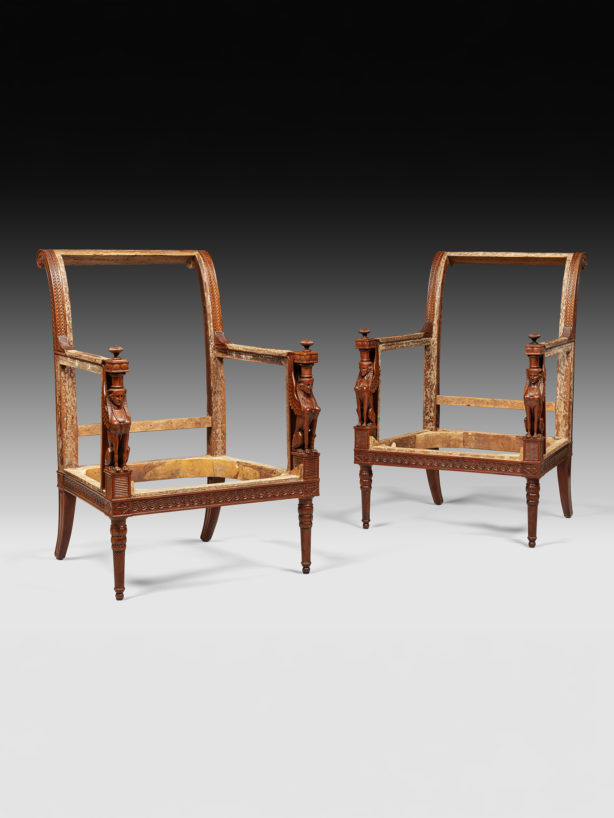Pair of bergères by Georges Jacob (1739-1814)
Each bergère features a rectilinear belt resting on two slightly tapered front legs and two back legs curved backwards in an Etruscan style. The lateral uprights of the backrest are bracket-shaped and punctuated by a scroll at the top. Two imposing winged sphinxes, richly sculpted in the round, form the armrests and armrest supports.
Of extraordinary quality, our armchairs are among the finest examples of the early “Egyptomania” furniture born in the reign of Louis XVI.
The eighteenth-century aristocracy, in search of travel and exoticism, looked to distant lands for inspiration in their interiors. Among them, the Egypt of the Pharaohs, on the border between the Orient and classical antiquity, became an important source of inspiration at the end of the century.
A taste for Egypt was born in the 1770s, when the world’s attention turned to Antiquity. Artists traveling in Italy discovered vestiges of this civilization, such as the Temple of Isis in Pompeii. Piranesi, in particular, was soon inspired by ancient Egypt, and in 1769, in his Diversi maniere di adornare i cammini, he published the decor he had created for the English café in Rome’s Spanish Steps, combining figurations of Egyptian gods, hieroglyphs and pharaohs.
One of the most important promoters of Egyptomania was Marie-Antoinette. As early as 1770, she had the ceiling of her master bedroom at the Château de Versailles decorated with winged sphinxes holding the arms of the Kingdom of France, sculpted by Antoine Rousseau (1710-1782). His discreet passion for Egyptomania is reflected in his furniture. The precious writing table designed by Adam Weisweiler in 1784 features a belt decorated with two winged sphinxes. Gradually, the details became more archaeological: the pair of andirons supplied by Pierre Philippe Thomire (1751-1843) for the Queen’s bedroom at Versailles in 1786 depict two sphinxes, their heads topped with nemeses. This same element is found on the furniture delivered by Jean-Baptiste Claude Sené (1748-1803) two years later for the Queen’s toilette at Saint-Cloud.




